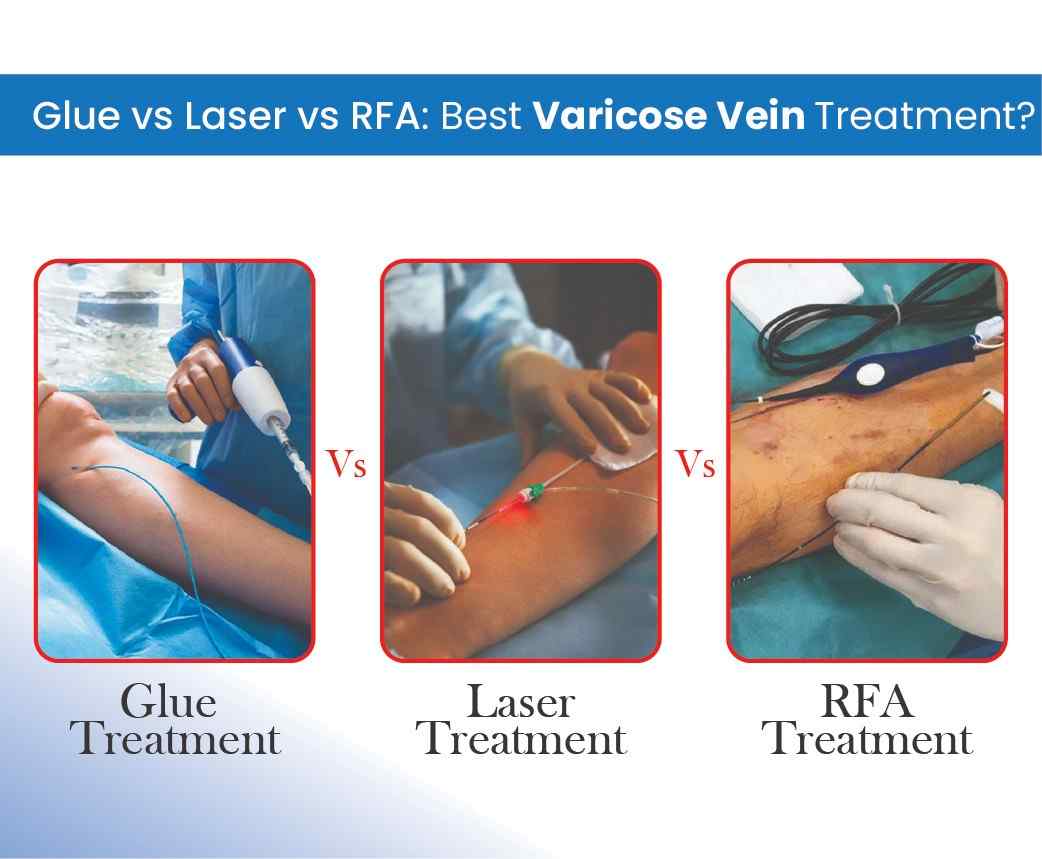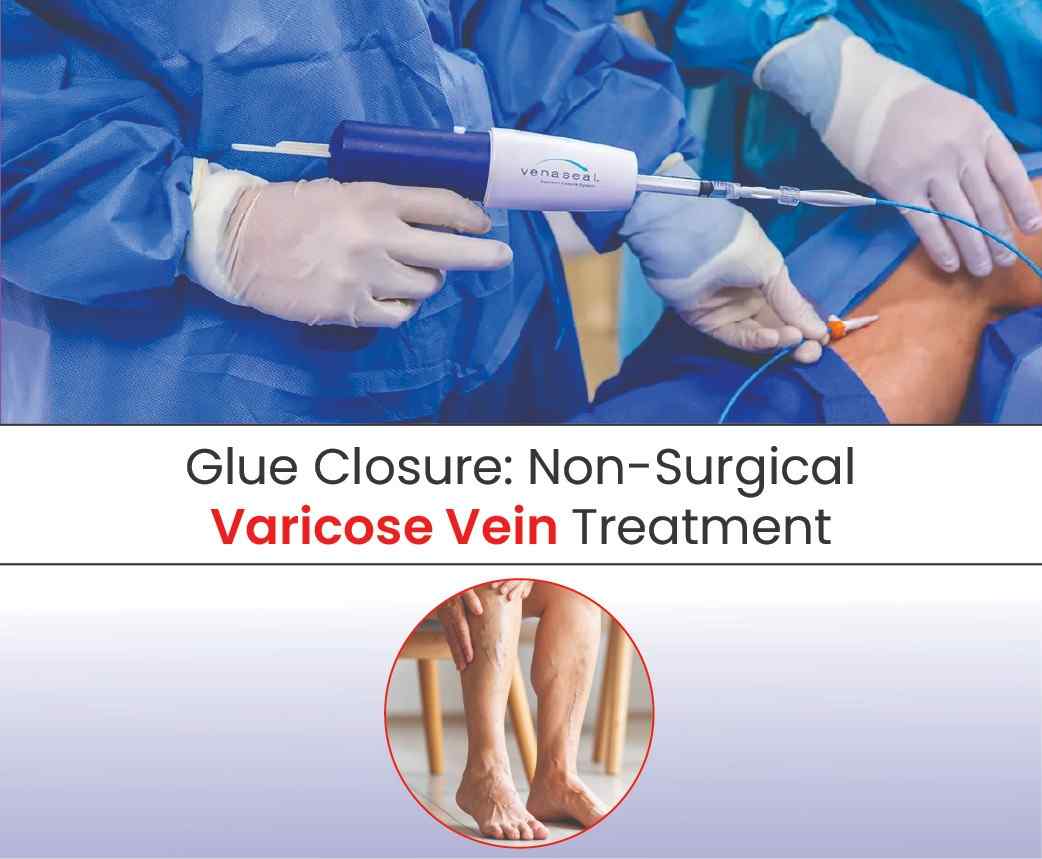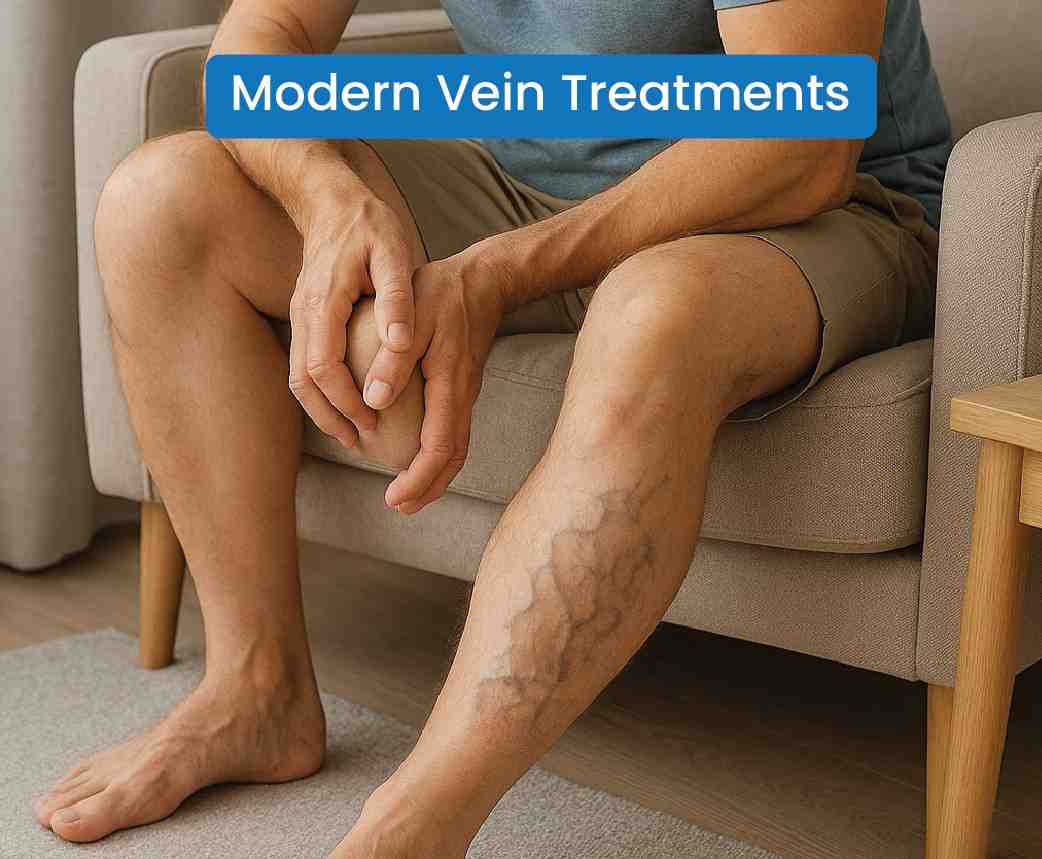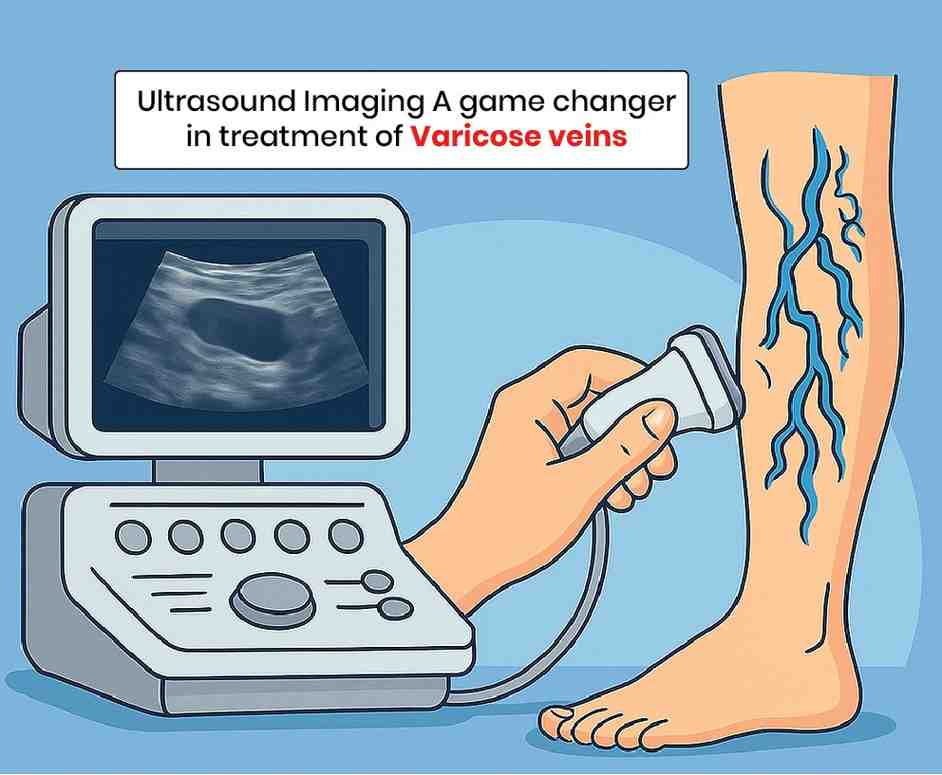Varicose veins are more than a cosmetic issue — they are a medical condition that can cause aching, heaviness, swelling, cramps, skin discolouration, and, in advanced cases, ulcers or blood clots. If left untreated, the symptoms can worsen, affecting both health and quality of life.
The good news is that modern vein treatments are minimally invasive, safe, and highly effective. At Avis Vascular Centre, we specialise in three advanced options — Medical Glue Closure, Endovenous Laser Ablation (EVLA), and Radiofrequency Ablation (RFA). All three are walk-in/walk-out procedures, but each has its own strengths.
1. Medical Glue Closure – The Needle-and-Done Solution
How it works: Using a thin catheter, a specially formulated medical adhesive is placed inside the diseased vein. The glue seals the vein instantly, and blood flow naturally reroutes to healthier veins.
Why choose it:
- No heat, no multiple injections
- Usually no need for compression stockings
- Resume normal activity almost immediately
- Minimal discomfort during and after the procedure
Best for: Patients seeking the least invasive option, especially those sensitive to injections or who cannot wear compression stockings due to lifestyle or skin conditions.
2. Endovenous Laser Ablation (EVLA) – Precision with Proven Results
How it works: A laser fibre is inserted into the affected vein under ultrasound guidance. Laser energy is delivered to heat and seal the vein walls, closing it permanently.
Why choose it:
- Over 20 years of clinical success worldwide
- Excellent long-term closure rates above 95%
- Quick recovery — usually within 24–48 hours
- Highly precise for targeted treatment
Considerations: Requires local anaesthesia along the vein’s length and typically one week of compression stockings to optimise results.
Best for: Patients with large, straight veins where maximum precision is needed for complete closure.
3. Radiofrequency Ablation (RFA) – Gentle Heat, Lasting Relief
How it works: A fine catheter delivers controlled radiofrequency energy to the vein wall. The heat causes the vein to collapse and seal shut, while surrounding tissues remain protected.
Why choose it:
- Less post-procedure discomfort than older heat-based methods
- Procedure time usually under 45 minutes
- Quick return to normal activities, often the next day
Considerations: Like EVLA, it requires local anaesthesia and short-term compression stockings.
Best for: Patients who want a comfortable thermal treatment with proven long-term results.
Choosing the Right Option
Your ideal treatment depends on the size and shape of your veins, your medical history, and your personal comfort preferences. Glue offers the ultimate convenience with no heat or stockings. Laser is ideal for larger, straighter veins needing precision. RFA provides a gentle heat-based solution with excellent patient comfort.
At Avis Vascular Centre, we use detailed ultrasound vein mapping to select the treatment that best suits you — ensuring safe, effective, and lasting results.




